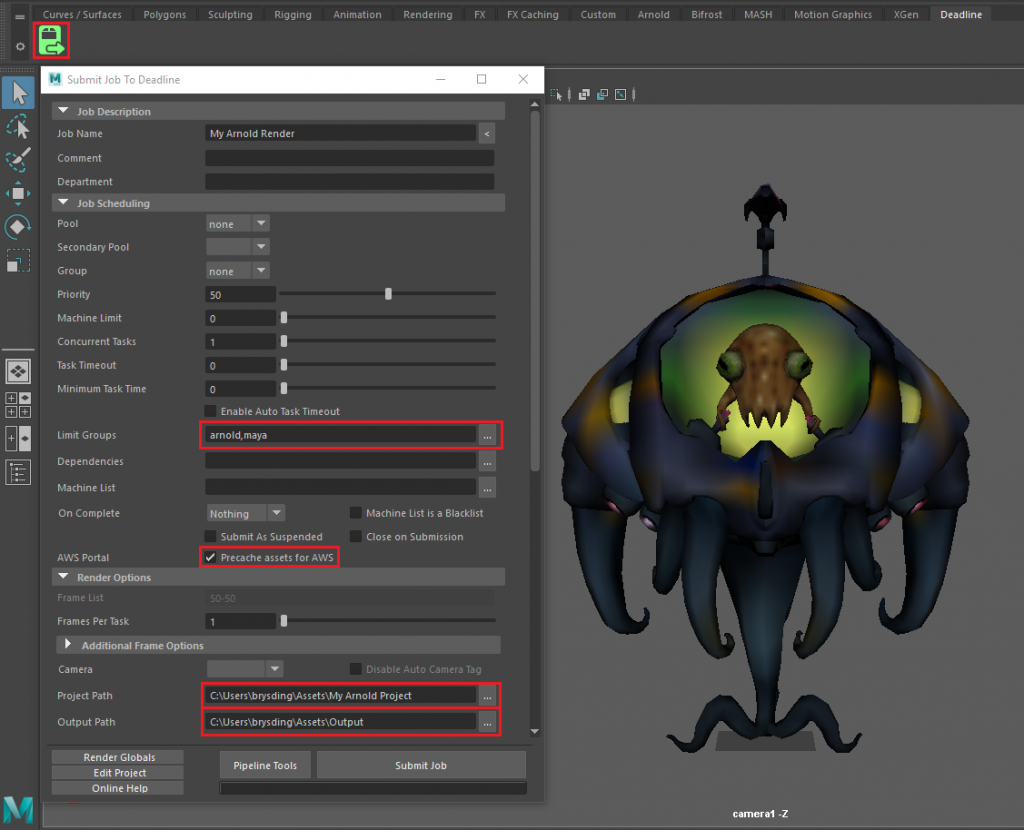AWS for M&E Blog
Tag: Deadline
Multi-Region Rendering with Deadline and Hammerspace
Over the past few years, Visual Effects (VFX) studios have gone more global by opening satellite studios or hiring artists working from home all around the world. Whether the reasons are location specific financial incentives, unlocking local talent, or co-locating with a production team, having a render farm in a single location is no longer […]
How Winnie-the-Pooh sparked Method Melbourne’s journey to cloud rendering
Authored by Jon Stanley, Head of Systems of Method Melbourne. The content and opinions in this post are those of the third-party author and AWS is not responsible for the content or accuracy of this post. If you’ve seen a blockbuster film in the last five years, you’ve likely witnessed the visual effects and […]
Elastic workflows and studio in the cloud at SIGGRAPH Asia 2019
Rendering, whereby a scene file of data is processed to become an image, is integral to visual effects and animation. It’s the compute-intensive process that allows an artist to see the final result of their efforts, instead of a low-resolution approximation. As a company founded by visual effects (VFX) practitioners, AWS Thinkbox has long focused […]
AWS Thinkbox releases deadline 10.1
I’m happy to announce that AWS Thinkbox has rolled out Deadline 10.1, the latest version of our production-proven render management software offering new performance enhancements and improved scalability. Deadline 10.1 is a major step forward and reflects our ongoing investment in performance and scale. Among the things I am most excited about for this release […]
Optimizing computing performance with AWS Thinkbox Deadline – Part 1
AWS Thinkbox Deadline is a compute management solution often employed in the Media & Entertainment (M&E) and Architecture, Engineering and Construction (AEC) industries. It is used to control render farms with physical and virtual machines running both on-premises and on AWS. Once Deadline is up and running, it is natural to look into how to […]
This is my architecture: TV Globo rendering VFX at scale with Thinkbox Deadline
In this episode of This Is My Architecture (in Portuguese with English subtitles), Thiago Abreu (Project Manager) explains how TV Globo architected a hybrid rendering solution with AWS. Using AWS Thinkbox Deadline, TV Globo can now scale their rendering workload in an elastic and cost-effective way using Amazon EC2 Spot instances. The near-limitless compute capacity […]
Territory Studio / life at work: A visualization of the data in content creation
Guest post by Helena Corvin-Swahn, Territory Studio A motion graphics and vfx specialist, Territory’s team of artists and designers rely on an ever-evolving relationship with technology to realise their creative work. In 2016, AWS Thinkbox Deadline was implemented to efficiently manage the increase in rendering requirements as the studio scaled. With an opportunity to create […]
Transferring asset files, caching, and storage-to-render on AWS
INTRODUCTION One of the many goals of Deadline 10 is to ensure that customers can render on AWS as easily as possible. An essential part of moving to a hybrid or fully AWS-based rendering workflow is dealing with transferring asset files to AWS, and downloading resulting renders from AWS. Fortunately, customers can accomplish this job […]
Rendering with AWS portal in Thinkbox deadline
Post by Bryson Ding, AWS INTRODUCTION The new AWS Portal feature in Deadline 10 supports many content creation applications, including Autodesk Maya and Autodesk Arnold. This feature allows you to use the distributed computing power of Amazon EC2 Spot Instances to optimize your Maya/Arnold workflow, and in this post, we will outline the necessary steps […]
Utilizing dynamic licensing in Thinkbox Deadline (Version Deadline 10 or later)
Guest post by Ryan Russell, Manager, Software Development, AWS Thinkbox INTRODUCTION Prior to Thinkbox Deadline 10, a render node could be configured to use either Usage Based Licensing (UBL) or traditional floating licenses. While this gave you full control over how your render nodes were licensed, it wasn’t exactly the most flexible system when you […]









